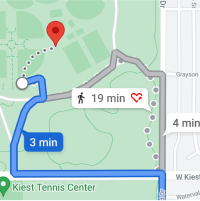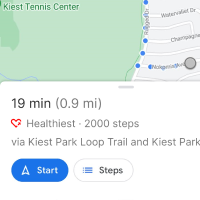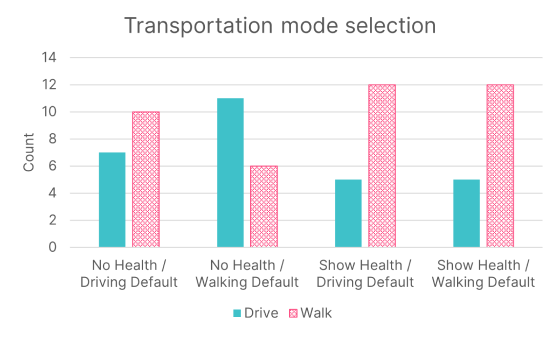Promoting Walking behavior
Overview
In this project, we designed a new feature for Google Maps to promote walking behavior. We created four prototypes in Adobe XD and conducted an experiment with 17 participants over Zoom.
Team
Koa Kiefer
Aaron Ang (me)
Role
Research and design
Tools
Experiment, interview, quantitative data analysis, Adobe XD
Timeline
4 weeks
Problem
How might we promote walking behavior on a large scale?
A quick Google search yields that heart disease is the leading cause of death. This can be solved by changing a sedentary lifestyle to an active one. Therefore, we try to find an answer to the question: how might we promote walking behavior on a large scale?
Solution
Health indicators were added to Google Maps to promote walking behavior.

Healthiest route indicator
A heart icon next to the estimated time indicates the healthiest route. This is similar to Google’s most fuel-efficient route indicator.

Number of steps
When the user selects the healthiest route, additional information like the number of steps is shown in the bottom sheet.
Outcome
Users are 2.74 times more likely to walk when presented with the healthiest route
The results from the experiment are promising and show that users are more likely to walk when shown health indicators. Users also indicated that they prefer to see the healthiest route but this could be due to social-desirability bias.

Learnings & Reflection
Use pilot data to test data analysis method before collecting real data
I did not plan out the data analysis method in enough detail, which led to long discussions about whether we can do the analysis with the data we collected.
Collect subjective measures as part of the interactive prototype
During one of my classes, an alumnus demonstrated an interactive prototype in Adobe XD, where she put a questionnaire in between the tasks. I thought this was brilliant and it worked well in this project. Data collection after each task is common in unmoderated usability testing but I haven’t seen this before in moderated usability tests.
Build, measure, learn
If I were to continue working on this project, I would build out the feature, deploy it to a beta group, and measure if people would actually choose to walk more.
How would Google Maps benefit from this?
Google has released a feature to promote sustainability by showing the most fuel-efficient route. Being able to nudge people to walk would be even better for the environment. It remains unknown though how people would perceive this as America has quite the car culture.